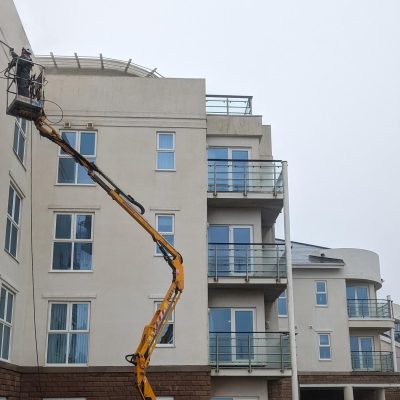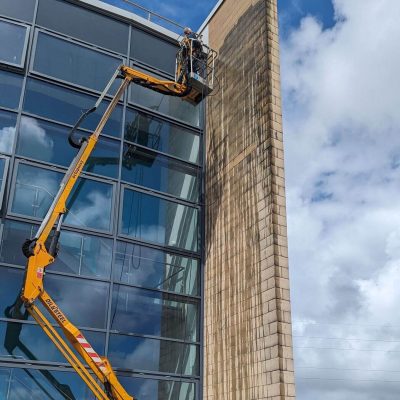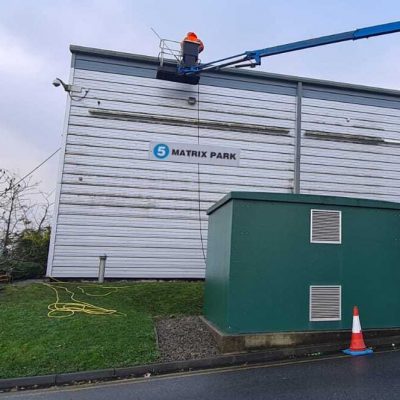Working at height can be dangerous if proper safety precautions are not taken. Falls from height remain one of the biggest causes of workplace fatalities and injuries in the UK.
However, the risks associated with working at height can be minimised by following some basic safety tips.
Use the right equipment:
Using the proper equipment for working at height is crucial. Always opt for good quality ladders, scaffolds, platforms, harnesses, fall arrest systems etc. from reputable suppliers.
Inspect the equipment thoroughly before every single time you use it to ensure no damage or defects. Also, check the weight ratings and use equipment suitable for the job.
Conduct risk assessments:
Carry out detailed risk assessments before starting any work at height. Identify potential hazards and decide on control measures to eliminate or reduce the risks.
Also, consider emergency evacuation procedures. Risk assessments should cover issues like safe access, edge protection, prevention of falls, etc.
Follow safe systems of work:
Have clear procedures which workers must follow for safely working at height. This should cover aspects like protective equipment use, safe working loads, number of people working, training needs, weather conditions, etc.
Standardise the procedures as much as possible.
Wear proper PPE:
Wearing suitable PPE (Personal Protective Equipment) is a must for working at height. This includes non-slippery safety footwear, gloves, hard hats, goggles, respiratory equipment, etc. depending on the specific job.
The PPE should properly fit the worker and be inspected regularly.
Prevent falls:
Put suitable control measures in place to prevent workers falling from height. This includes installing guardrails, using safety nets and airbags, ensuring tight edge protection, tying tools and equipment securely, etc.
Access areas and openings should be clearly marked.
Use fall arrest systems:
Where other measures are not practicable, use suitable fall arrest systems as a last resort. This includes safety harnesses, shock absorbing lanyards, retractable fall arresters connected to anchor points.
Workers must be trained in their safe use.
Maintain three points of contact:
Ensure workers maintain three points of contact to provide stability during access, egress and while working. This may involve using steps/handles on equipment, ensuring robust foot and hand placement.
Avoid overreaching.
Assess weather conditions:
Check weather forecasts thoroughly before working at height. Postpone or halt work if high winds, rain, lightning etc. are expected.
Conditions can seriously impact safety and equipment effectiveness.
Allow only trained workers:
Allow only trained, certified and competent workers to work at heights. They should have the necessary skills, attitude and experience for safe working.
Closely supervise inexperienced workers.
Organise work teams properly:
Plan manpower needs carefully. Have sufficient workers available to do the required tasks safely. Clearly define individual roles and responsibilities within teams.
Good communication between members is essential.
Regularly inspect equipment:
Equipment used for working at height must be thoroughly inspected by competent people. This includes ladders, access platforms, scaffolding, rope access gear, etc.
Defective equipment must never be used. Tag and remove any damaged items.
Provide adequate supervision:
Have site supervisors constantly monitoring work at height activities. They should check procedures are followed, safety equipment is used. And workers avoid unnecessary risks.
Competent supervisors must be deployed in height work.
Keep emergency procedures ready:
Be prepared for emergencies. Have first aid provisions available. Create evacuation plans for injured workers or those unable to get down unaided.
Practice rescue drills regularly. Provide training in evacuation and recovery.
Parting Words
Following these tips outlined above will help minimise the inherent risks involved in working at height. However, every worksite is unique, so conduct proper assessments to identify job-specific hazards and the controls required.
Ensure everyone is aware of the safety procedures and complies fully. Working at height can be done safely by paying attention to detail and making it an organisational priority.
Proper organisation, training, supervision, equipment and safe systems of work are all essential. This will help prevent accidents and ensure workers return home safely at the end of each day.
Here are some real life tips on these threads from reddit:



